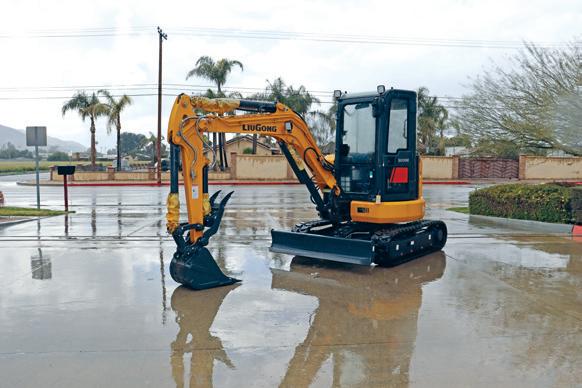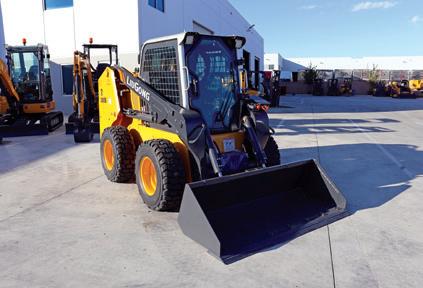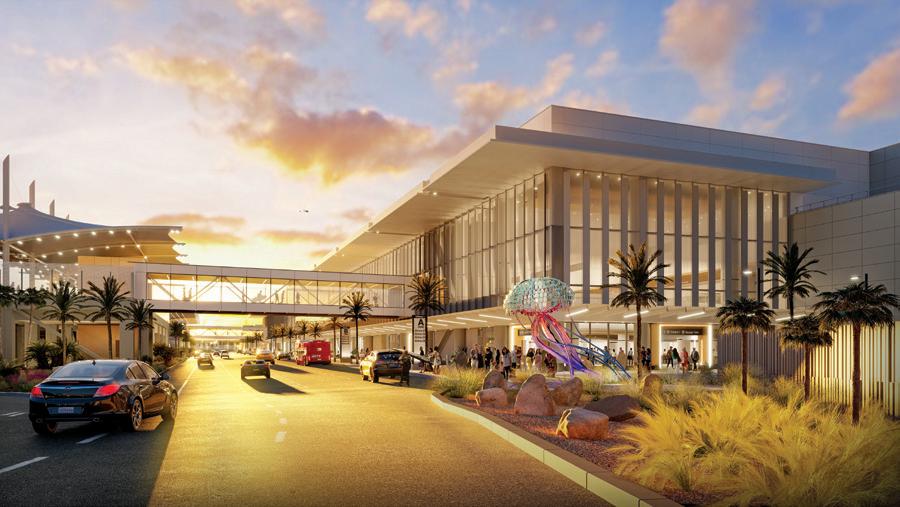
6 minute read
Turner-Flatiron Joint Venture Constructing New Terminal 1 at San Diego

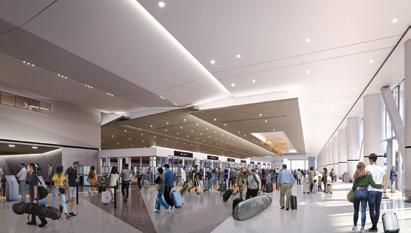
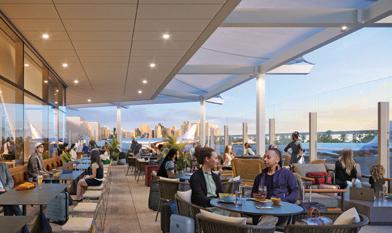
San Diego International Airport (IATA: SAN, ICAO: KSAN) has a rich history dating back to the early 20th century. In 1918, the United States Army established an airfield at the present site for military training and experimental flights. The field was named Rockwell Field after Lieutenant James H. Rockwell, who died in an airplane crash in 1913. In 1928, a group of San Diego businessmen formed the San Diego Airport Company and purchased the land from the federal government. San Diego Municipal Airport quickly became the busiest airport in the US. During World War II, the airport was used as a training base for Navy pilots. After the war, the airport underwent a series of expansions and renovations to accommodate the growing number of commercial flights. The 1950s brought a new terminal building and a control tower as the expansion continued with more runways throughout the 1960’s and 1970’s.
Terminal 1 at San Diego International Airport was originally constructed in 1967. Terminal 2 was originally constructed in 1979, and was renovated and expanded in 1998 and again in 2013 to add additional gates and provide a more sustainable, modern, and convenient airport experience. The airport’s name was officially changed to San Diego International Airport in 2003, shortly after the formation of the San Diego County Regional Airport Authority.

Today, San Diego International Airport is one of the busiest single-runway airports in the country, serving more than 25 million passengers annually. The airport has won numerous awards for its innovative design, sustainability initiatives, and customer service.
The San Diego International Airport is currently undergoing yet another major transformation with construction now underway on the new Terminal 1 state-of-the-art 30-gate facility. The San Diego Aviation Alliance (SDAA), also known as the Arrive team, was awarded the contract to design and build San Diego Airport’s new Terminal 1. The team consists of the Turner-Flatiron Joint Venture, with Gensler managing design and overseeing MKA Structural Engineers, and with Kleinfelder and Latitude 33 providing civil design. Once the environmental permits were issued, the Turner-Flatiron Joint Venture began construction in November 2021, starting with the demolition of vacant cargo buildings and facility maintenance structures. Other early-stage work included the removal and processing of existing concrete and asphalt pavement for later use and the relocation of multiple utilities.
The New Terminal 1 at San Diego International Airport will replace the existing terminal with a brandnew 1.2 million-square-foot modern facility. The project is being completed in two phases to allow for continuing operations of a certain number of gates during the build-out process. The first phase of construction will allow for the opening of 19 new gates in the third quarter of 2025. The second phase will add an additional 11 gates with an opening date in late 2027. When all of the work is complete, Terminal 1 will have 30 gates, for a total of 62 gates available between both Terminal 1 and 2. Passengers will enjoy all of the new restaurants, shops, additional security checkpoints, and more available seating in the gate areas. Design features will include a spectacular exterior dining terrace with views of downtown and the waterfront where passengers can lounge and enjoy a bite to eat while waiting for their flight. Public art will be displayed throughout. Other sustainable and energy-efficient features include redesigned taxiways that will help to reduce greenhouse gas emissions, and an underground fuel-delivery system resulting in less emissions and quicker turnarounds at the gates. There will also be a new baggage handling system capable of processing up to 2,000 bags per hour. A new 5,324 stall parking structure with multiple elevations will also be built, as well as an elevated departure roadway (EDR) and an extended “on airport” roadway system that will take inbound airport traffic off North Harbor Drive at Laurel Street.
Turner Construction Company and Flatiron Construction Company were selected as the joint venture partners for the construction of the new Terminal 1 based on their extensive experience in large-scale infrastructure projects and their strong reputation for delivering high-quality work on time and on budget. Both Turner Construction Company and Flatiron Construction Company are subsidiaries of HOCHTIEF, a Germany-based engineering-led global infrastructure group. Steve Rule is the Project Director for the Turner-Flatiron Joint Venture { Continued on page 12 } at the San Diego International Airport. “Turner has teamed with Flatiron in the past on airport projects in Sacramento, Denver, and San Diego, to name a few,” says Rule. “We make a great team. Flatiron has experience in civil construction, including everything from earthwork and utilities to runway and taxiway operations. Turner has extensive experience in the construction of airport terminals globally.”
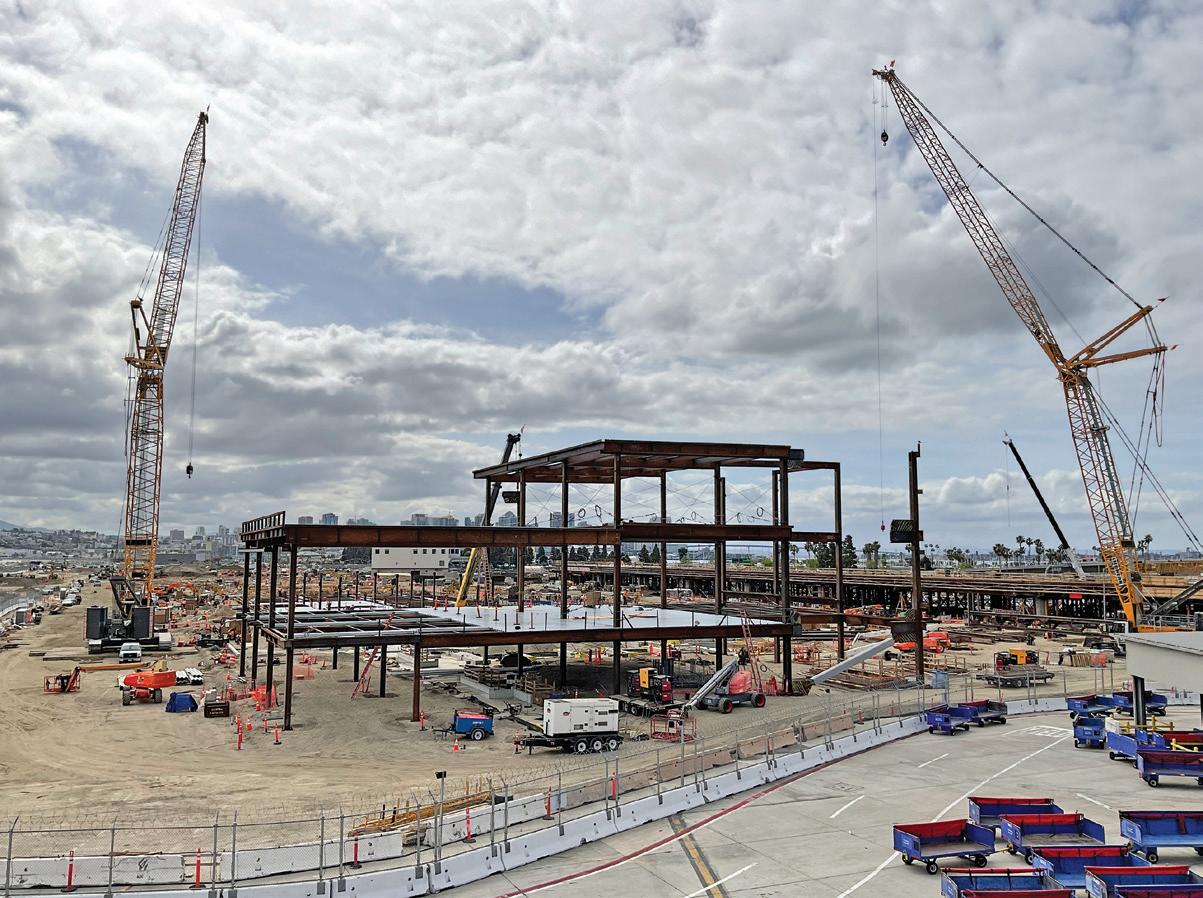
First phase of steel erection for the T1 Terminal Relocation. The teams have to overcome daily challenges with weather and crane heights due to close proximity to the airport.

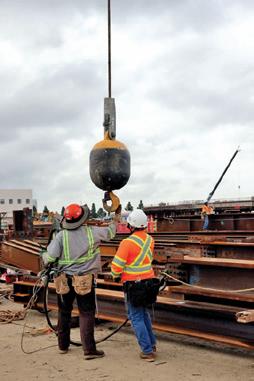

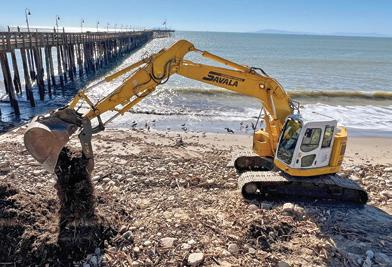
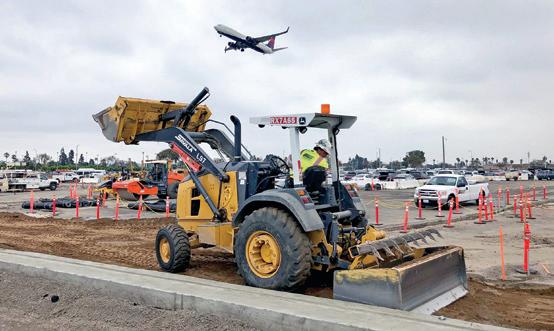

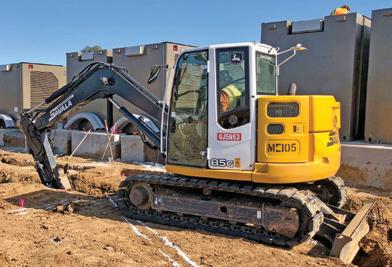
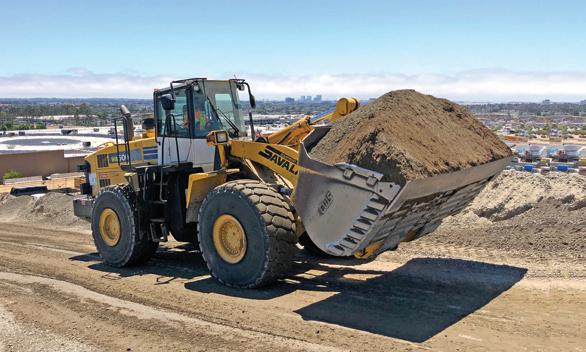
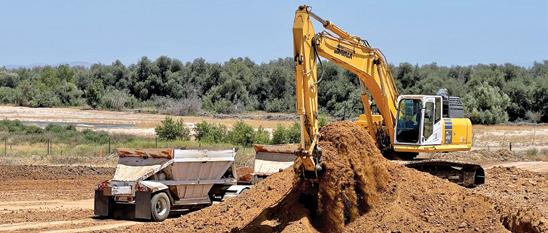
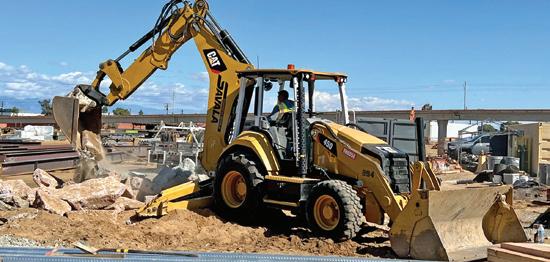

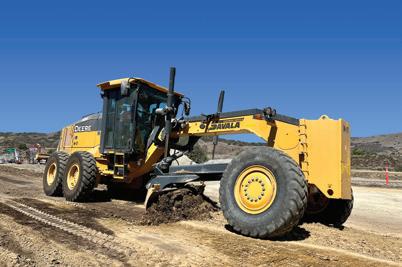
The project is design-build and is estimated to cost $2.6 billion. “The advantage of a design-build project is that the team can start releasing packages, purchasing equipment and materials, and hiring subcontractors earlier in the process as that portion of the design is developed. We have taken advantage of this to better manage and mitigate current supply chain issues,” says Rule. The project team expects to have 800 to 1,000 trade individuals working at the peak of construction.
According to Rule, the Terminal is heavily focused on the transition from foundations to structure.
“There is a lot of structural steel being placed, as well as concrete being poured for the elevated departure road (EDR), foundations, and parking structure. We are continuously pouring concrete as we work west to east with a lot of open ground with rebar installed,” continues Rule.

Terminal 1 will be a structural steel building with cast-in-place concrete on metal pan decks. It is standard commercial construction with some unique added features like the braces (BRB-Buckling Restrained Brace) designed to seismically strengthen the building structure. Crews are also building MSE (Mechanically Stabilized Earth) retaining walls throughout the project and to create the raised roadbeds.

Paul Mignone, Civil Manager on the Terminal 1 Turner-Flatiron Joint Venture project, said, “This is by far the largest ongoing project in San Diego County with the site stretching around a mile from one end to the other,” says Mignone. “Due to the multiple trades working throughout this vast area, the Turner-Flatiron Joint Venture is utilizing Navisworks and Revit, which are essentially 3D modeling programs designed to organize and streamline the construction process. There is so much underground utility work going on, for instance, and we need to know where one trade may conflict with another. These programs allow us to see the route of each utility with accuracy within two inches. We can see the piles, electrical, plumbing and even create a walk-through rendering to see what the interior of the buildings will look like before any actual work begins.”
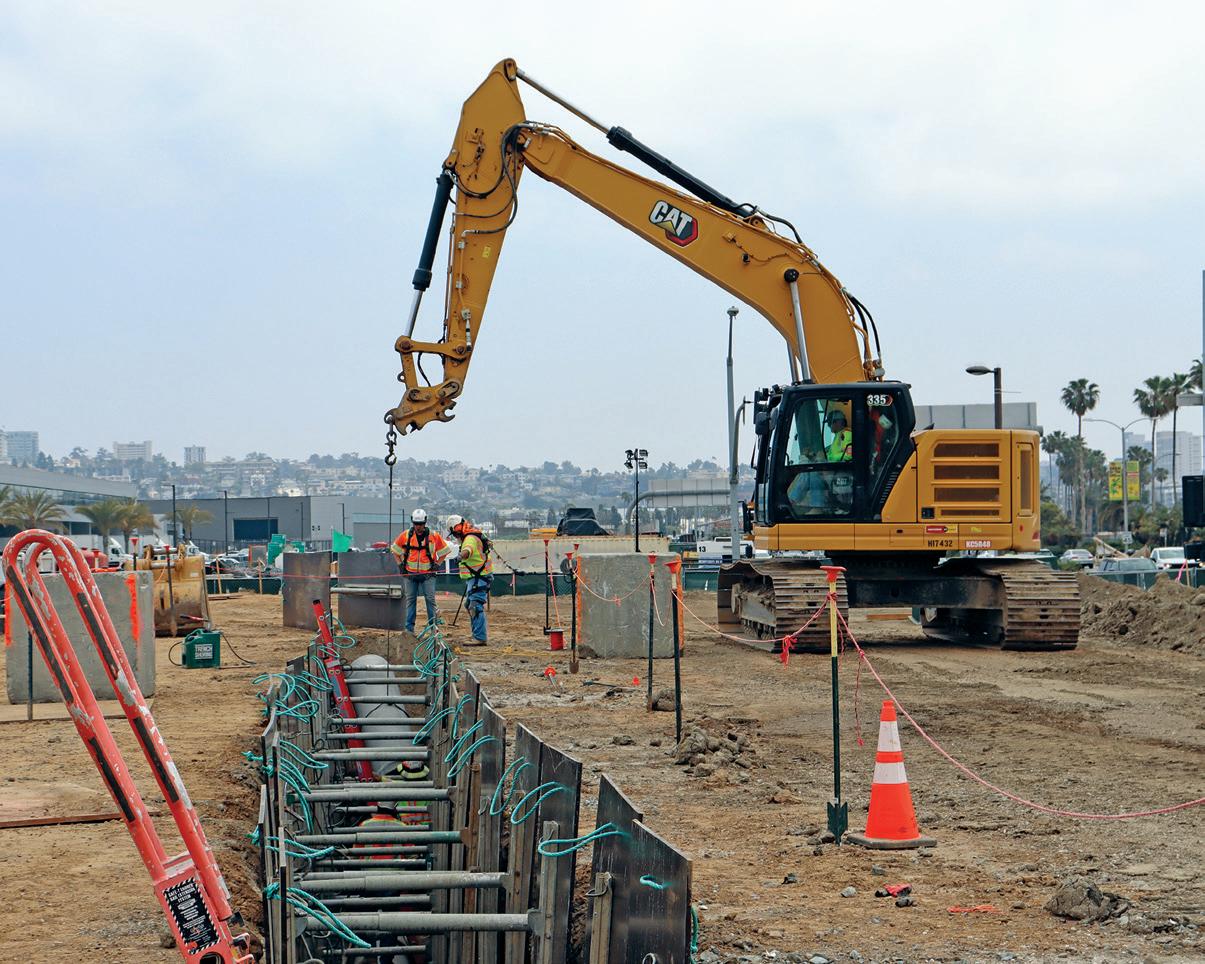
The demolition of the existing Terminal 1 building will begin in fall of 2025. “We still need to demolish Terminal 1. Once the new administration building is constructed late this year, we will begin the demolition of the old administration building that is currently active,” said Mignone.
The Turner-Flatiron Joint Venture has a concrete crushing plant onsite to recycle concrete, asphalt, and other reusable materials to build up pads and use as fill material throughout the jobsite. The project is on track to receive sustainability awards for the 100% recycling of certain materials in the construction of roadways and aprons. In addition, the project is pursuing LEED Silver certification for the new Terminal and parking structure.
Mignone points out that it is unique to have a Joint Venture that has the ability to self-perform such a large portion of the work.
“This is such a great partnership where both construction firms have gone above and beyond. We are self-performing the roadway grading and excavation work onsite with the exception of the earthwork at the Terminal baggage claim facility. We will also be performing the concrete paving for the apron work around the Terminal, and are in the process of obtaining approval to batch our own concrete onsite to more efficiently place the apron concrete,” says Mignone. “The landside SPO (self-perform operations) total quantities are significant, with 68,000 cubic yards of concrete, 14 million pounds of rebar, 52,000 linear feet of pipe, 46,000 tons of hot mix asphalt, and 147,000 square feet of MSE walls.”
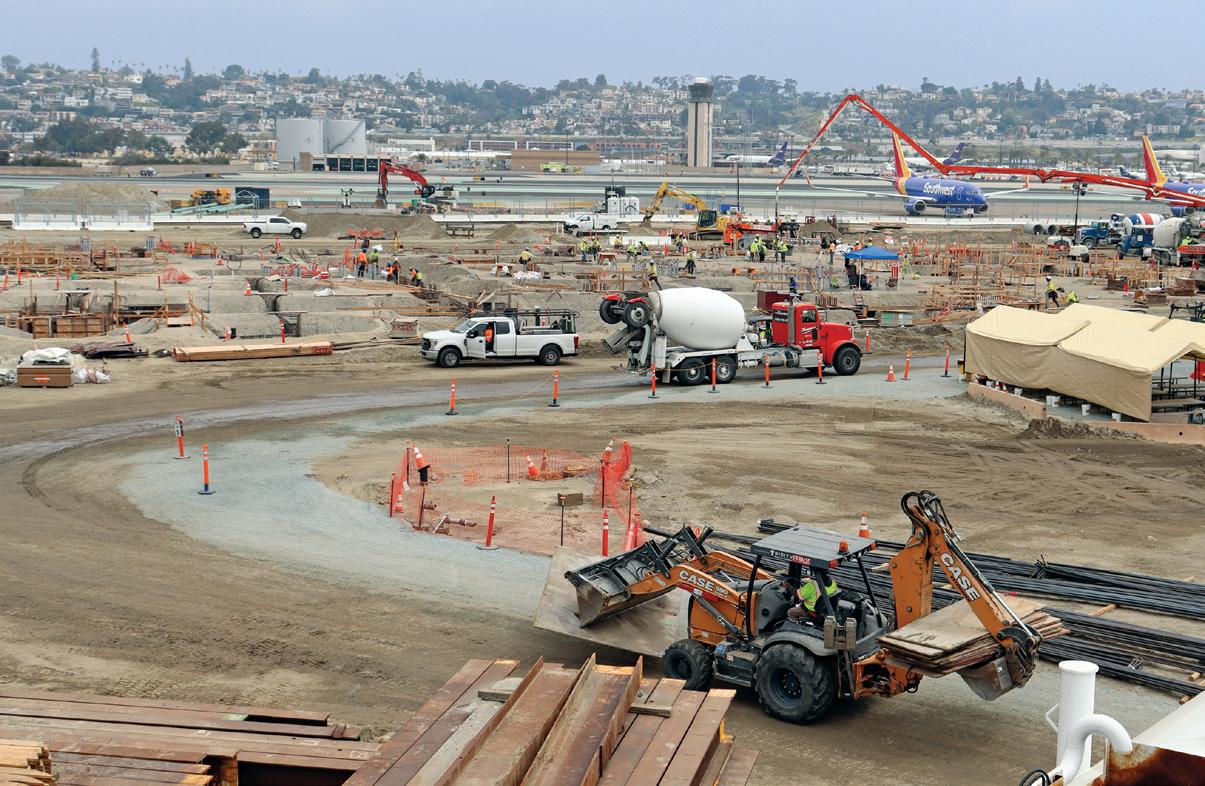

The project has been running day and night for several months and is navigating a tight schedule and various logistical challenges. The project team is working to advance the Terminal work in conjunction with the roadway work all while leaving room to stage, stockpile, and construct all materials and aspects of the projects simultaneously.

The SAN New Terminal 1 project is part of a broader redevelopment plan aimed at modernizing and expanding facilities to better serve the growing number of passengers traveling through San Diego. For more information on the New Terminal 1 project and the TurnerFlatiron Joint Venture, please visit www.arrivesdaa.com Cc



